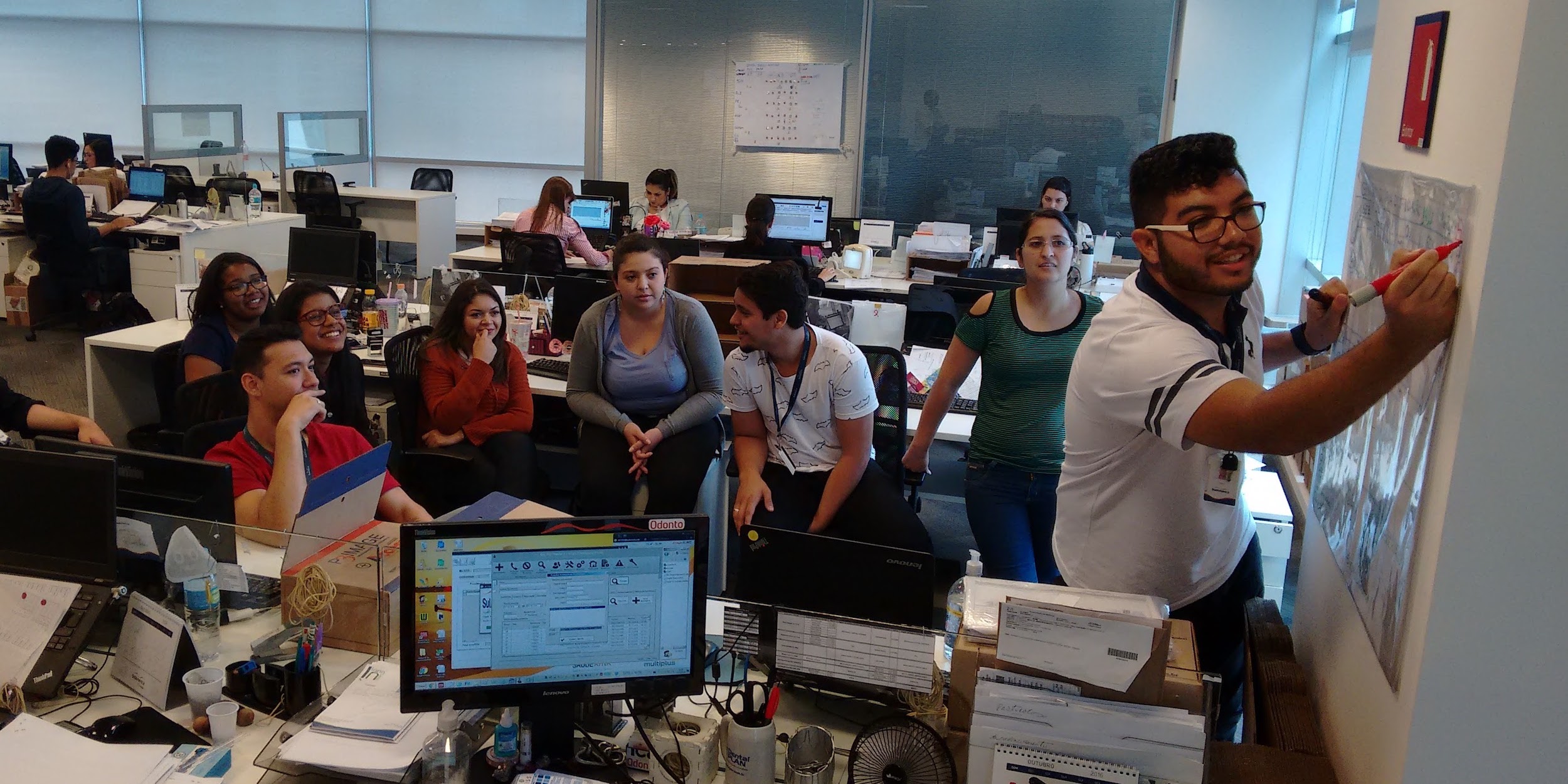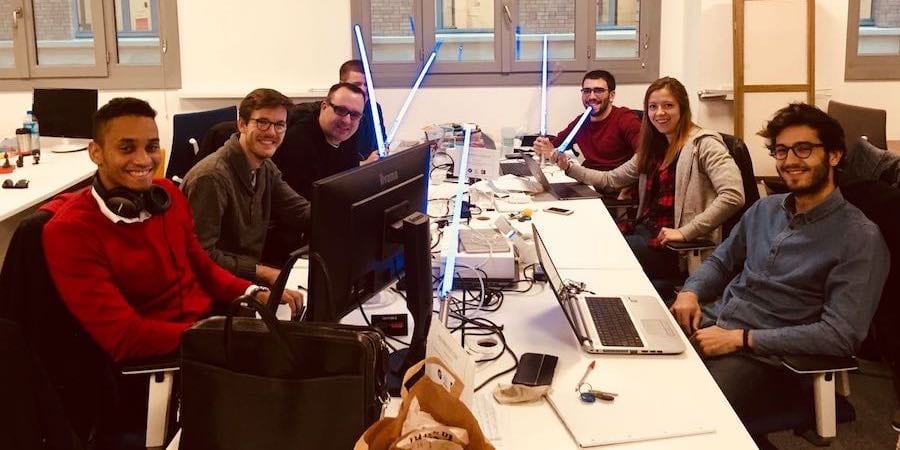
Why is TPS so smart?
FEATURE – A real understanding of Lean Thinking can only stem from an exploration of its tacit aspects, not just its most explicit, easy-to-grasp elements.
Words: Michael Ballé and Alice Mathieu
“We know more than we can tell.” In the early 1960s, Michael Polanyi opened our eyes to the reality that much of human knowledge is tacit, intuitive, felt, as opposed to explicit, written down and explained. You can explain how to ride a bike, write down the rules and the dos and don’ts, but, in the end, you’ve got to feel your way on the bicycle and let your body and mind somehow handle the contraption.
Distinguishing tacit from explicit is a breakthrough because it makes you see that instructions only capture the obvious part of the experience. The qualitative part – the stuff that makes it interesting, makes it work, feels good and satisfying, and so on – is often tacit and hard to put in words. This means that, if you want to share knowledge or experience, it’s easy to share the explicit part of it, whereas to communicate the tacit aspects, often the critical ones, will require continuous conversation and showing-by-example.
For instance, in the old-time document of operations standard work sheet below, the author shares the explicit dimension of the process on the left (the job sequence that we will find with every procedure) and then points to key elements in the tacit dimension on the right.

These key points are far from self-explanatory; they require thought and probably further conversation and demonstration. Nevertheless, such tacit elements are what makes quality, just like tone of voice makes quality of service.
The tacit dimension very concretely affects societies, just as it does individuals, in terms of what is considered or not. Our forebears had no problem with horrifying notions, such as slavery, until it became part of the conversation and human empathy prevailed. Or, for instance, in our current business worldview, consider how much people talk about innovation compared to maintenance. Maintenance has almost completely disappeared as an explicit topic and, as a result, maintenance budgets have been cut everywhere as people sought to replace the old with the new. As a counterfactual, imagine our schools, hospitals, railways, and roads if the main explicit topic was maintenance rather than digitalization!
The shift to information technologies has accelerated the total dominance of the explicit dimension. Contrarily to the pen-and-paper sheet I mentioned above, a computer-written form will favor the explicit – in other words, what can be easily coded.

On the same Toyota document, in a form that will look far more familiar to us, the explicit has overtaken the attempt at showing the tacit. This progressive dismissal of the tacit dimension is having a disastrous impact on so many professions that require a human touch, such as nursing, crafting, selling, designing – anything, really, that is about capturing something elusive and complex in order to deliver “quality”.
This goes for organizations as well. Organizations are structured around two explicit strands that are woven together: subordination and processes. Subordination is about following the written rules, obeying the boss’s explicit directions, staying within budget, reporting results and, consequently, being rewarded or punished. Command-and-control chains are what most people think about when they think about organizing anything. Then, there is process: what work must be done when, by whom for whom, and how. Results are described in explicit sequences of steps or actions to be undertaken specifically and repetitively. Subordination chains and process sequences are easily captured explicitly, and, for the most part, people think these two strands are enough to delivery consistent results.
But there are two other strands that drive overall outcomes, and they are far less explicit. First, the continuous conversations people have about their work. This sensemaking goes on all the time: what does success look like? How are we going to pursue it? What works and what doesn’t? What matters? What doesn’t? What is ok? What isn’t? What do we need to know to get it right and what don’t we know at all? It’s there, constantly, for better or ill, but no one pays it much attention. This, in fact, is culture.
The second strand is the chain of tacit mentoring: who showed you how to do your job, who transmitted the purely tacit ways to look at a situation, to handle issues, to be nuanced, to be smart, where to start, etc.
Explicit doesn’t need a conversation – you can share the explicit form or text, rule, document, etc., and let the other person get on with it. Tacit, however, is a more elusive beast: it requires not just one conversation, but a continuous conversation or continuous modeling, so that its elements are passed through from one person to the next. Explicit gives you minimum job execution, with all the mistakes and blunders, the redos and the reworks. Tacit is where performance lies.
Toyota has done a lot to preserve these tacit dimensions. It holds on dearly to its Toyota Production System (TPS) and Toyota Way ideas. It also continues to invest in key mentors, sensei, coordinators, and trainers. It values and valorizes “Takumi” master craftsmen, highly skilled artisans who give the quality edge to mass producing cars. It takes 30 years at working one craft to be considered a Takumi and, yet, these people are essential to modeling and conveying the tacit elements that make the job right.
Take the Toyota Production System, for instance. If you only seek its explicit dimension, you will interpret it as a set of process instructions. But none of the old-time sensei we’ve seen or heard of did so. They used it as a guide for conversations. They were most annoying because after pointing out some waste and expecting you to investigate, they would never follow through or be particularly interested in what you had done. They would only point to further waste. The aim was to make you think, not to make you execute.
Taking in the tacit dimension, the TPS becomes a guide for continuous conversations:
• Who are our customers, and do we seek to completely satisfy them?
• Do we deliver the highest quality?
• With the shortest lead-times?
• At the lowest cost?
• Do we pull work at takt and strive to be closer to one-piece-flow?
• Do we spot defects right where they are created, stop, fix, and look deeper into the technology?
• Do we seek stability and look for capacity/workload imbalances?
• Do we fraction and mix workloads?
• Do we model, discuss, and teach detailed technical standards?
• Do we encourage kaizen?
• Do we demand and support that teams organize their own workplace with 5S?
• Do we emphasize Total Productive Maintenance enough?
• Do we teach rigorous problem solving as the main language of our culture?
TPS is so smart because, by having these conversations continuously, you will have better outcomes. These questions were not invented by a few guys talking about how to make better software over a pizza. They are the result of a long process of investigation by thousands of engineers on how to better respond to industrial challenges over 70 years or more. Don’t interpret them as instructions to execute. Don’t see them as processes to implement. Everyone who has tried that route has failed. Toyota processes only work for Toyota because the answer to these questions depend on what tacit problem you are trying to solve. Your problems will be different from Toyota’s, obviously.
But do have the conversation. Regularly, over time, until you tease out the tacit dimension in your own work. In a larger organization, if you need to support the conversation, set up communities of practice, non-hierarchical, so that people can visit each other’s gemba, see, and discuss. The conversations aren’t all. We also need mentors who demonstrate the tacit dimension. For instance, it recently struck me that although my father Freddy did a lot to copy Toyota’s visual management system in his plants, the visiting Toyota sensei would never comment. Instead, they only focused on kaizen. Indeed, Freddy caught the bug. If asked what the most important thing to get right about lean was, he’d answer that every manager is paid to put out fires (if they let a fire rage, they’re not doing their job), but if you only look at fire you will have more and more fires. “That’s why we do kaizen first,” he would say. Kaizen, kaizen, kaizen. He didn’t learn that from books or from his own efforts at implementing TPS outside of Toyota. His sensei never told him. He picked it up from continuous plant visits by various mentors, who were all asking the same thing, albeit in different ways: “Show me the kaizen.”
These are not the only conversations you should create and support. What customers? What products? What technologies? With whom? Which officers to promote? Which partners to pursue? All these topics are critical and can’t be decided on in the short term. If you want better outcomes, you need to seek at least a three- to five-year perspective and, well, talk it through until you feel the tacit dimension. It’s important to understand that conversations have a huge impact because there are other conversations we are not having. As discussed earlier, obsessing over the “innovation” conversation has completely extinguished the maintenance conversation – and look where society is at now.
Understanding conversations is important as well, in that they are not storytelling. By definition, they imply exchanges of perspectives, opinions, experiences, and ideas among several people. ChatGPT, an AI Chatbot launched in November 2022, is scary to people who only see the subordination dimension of information, for teachers who think their job is to somehow force their explicit knowledge into their pupils’ heads. But for those who know that leading group conversations and exchanges on what students already know, have discovered, or should find out is the superior path to teaching and learning, AIs are a new tool, not a threat. No AI will ever encourage a team conversation.
Clearly tech has pushed us towards a more explicit vision of the world. In our work of creating apps we are explicitly seeking to explicit an experience in order to code it and provide a service. And of course, tacit is where most apps fall short – users have tacit ways of handling the situation where they themselves know more than they can tell, so it’s very hard to capture, which is what we seek to do. But we fear that as a result of introducing more explicit systems around us, from video games (the path is explicit) to ERPs to apps, we might be completely losing sight of the tacit dimension and its importance to the quality of the experience. To a large degree, consumption is the explicit part of experience, and not the most enriching or fulfilling.
With this in mind, TPS is incredibly smart in two ways: first, it understands that to improve company performance there are a set of conversations that must continuously happen to explore the boundaries between explicit knowledge (standards) and tacit knowledge (their interpretation in context). The system sets the frame, but without ever detailing every element: the conversations must happen on the gemba. Additionally, the set of conversations highlighted in the system has proven incredibly powerful, robust, and translatable to many business environments – it’s simply a superior set of questions than the MBA frame of “how do you optimize turnover, operational costs, financial costs and exceptional costs?”.
The second way in which TPS is so smart is that its inventors realized how essential its tacit part is (indeed, Taiichi Ohno – often referred to as the “father of TPS” – is said to have resisted formalizing the system for fear it would lose its power). Therefore, mentors, teachers, and sensei are needed to keep the spirit of TPS alive and to correct misconceptions and wrong interpretations. Every Toyota veteran we have talked to has always said that the TPS is not set, that it continuously evolves, while its guiding principles so far remain the same. This is a great topic for conversation!
We need to wake up from the mad digital dream of full explicitation of everything and realize that explicit knowledge only delivers diminishing returns (as well as red tape bureaucracy, absurd decisions, burnout, and boreouts). Learning zones are about exploring the tacit dimension and discovering new things, fooling around with them, familiarizing oneself with ideas and feelings until, yes, they can become explicit to some degree (there is a yin and yang movement of tacit and explicit). In practice, the place to start is to look at culture as conversations. Are we doing the right things? Are we doing them right? When you ask these simple questions, watch how people react and what they come up with. Then wonder: is this really the conversations we should be having?
THE AUTHORS


Read more


CASE STUDY – In a Brazilian insurance company, a team worked hard to streamline the revision of dental claims – a great example of Lean Thinking in an administrative process.


PROFILE – Persevering, letting people inspire you and committing to continuous learning. These are the things you need to do to successfully embrace lean thinking and, it turns out, learn to play the violin.


FEATURE – When we emphasize systems and roles but fail to encourage and support kaizen, we cannot expect to tap into the full potential of Lean Thinking as a cognitive revolution.


FEATURE – In the second article in our series with Theodo, the CTO tells us about an experiment that showed how problem solving is easier when the job is clearly defined.

